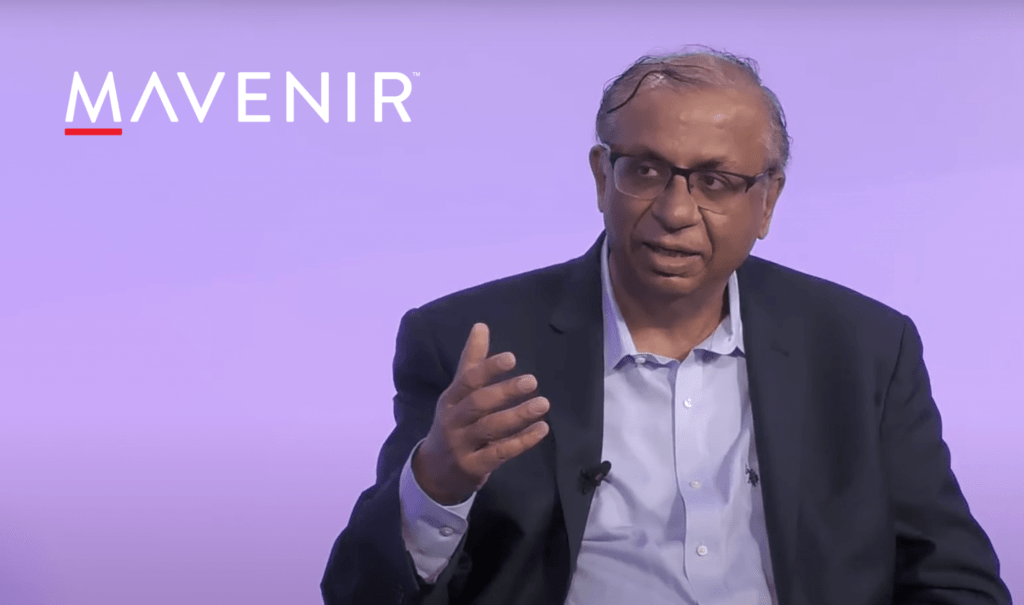Powering Network Transformation

I spent last 2 days with my executive team and worldwide sales team. We reviewed our progress so far and path forward for rest of the year and next year.
My observations and conclusions are as follows:
- 5G rollouts have been a disappointment for most operators. Revenues are not growing but costs have increased.
- Industry spend has come down in almost all countries.
- Customers are paying more attention to cost and want to do “more with less”.
- Industry’s desire to adapt innovation and transform itself is gaining ground.
Mavenir started in 2005. We were competing against Alcatel, Cisco, Ericsson, Huawei, Lucent, Motorola, Nokia, Nortel, Samsung, Siemens and ZTE. All these companies took pride in building a complete proprietary stack that included their own hardware, operating system, firmware, application, and OSS. With the industry downturn in 2008, the need to invest in 4G and competition from Huawei and ZTE, a number of these companies did not survive. Rather than innovating and adapting Open architectures, the industry consolidated and as a result many of these companies are not there today.
Mavenir has not only survived but has done well for its employees, investors and most important our customers. We have gone through many downturns and have come out stronger each time. I owe that to our capability to innovate and use innovation to help our customers to do “more with less”. Our adoption of Virtualization and Open architecture from the very beginning allowed us to innovate at cheaper cost than our competition. Our first application in 2007 was a virtual SMSC. Since then, almost every year, we virtualized at least one new application. Today, we can deploy SMSC, MMSC, Voicemail, IMS, VoLTE, VoNR, 2G-5G Packet Core, 2G/4G/5G Open RAN all on the same containerized infrastructure. We have developed all these products.
With much less R&D cost due to adoption of open architecture. Mavenir’s cloud-native solutions today serve more than 50% of the world’s subscribers. We have a strong customer base of over 300 CSPs and enterprises across 120 countries using and our mature products in Voice, Messaging and Packet core. We have helped them not only in reducing cost but has also enabled our customers to innovate faster. We have been first in the world to launch VoWifi, VoLTE, RCS, Containerized 2G-5G packet core and now containerized Open vRAN.
I believe that this slowdown will help us and our customers to come out stronger. With the current device ecosystem and use cases, 4G data connectivity seems to be good enough and consumers are not willing to pay more for 5G connectivity. Operators have spent billions to acquire spectrum and deploy equipment to use this spectrum. 5G spend and rollout has not brought any benefit to Investors, Operators and Telco Vendors. Operator revenues have not increased but operating costs have increased. Recently, I met a CTO of an Operator. That operator spends $200m on radio CapEx every year but spends $800m on OpEx. Human Cost to run and manage the network exceeds $300m and is greater than RAN CapEx. They have traditional closed architecture radio vendors. Each vendor has their own proprietary tools, which means that Operators need to have dedicated teams to manage the equipment. Like all other operators, they can only deploy only one vendor in a particular geography. They cannot mix and match a vendor in a region. Any market share change requires new vendor to swap existing vendor completely. In most years, vendors spend more money in offering “free” swaps than R&D. This behavior has not changed since they launched their 2G network in 1995. He acknowledged that this worked till now because they were adding subscribers, adding cell sites etc.
This is first downturn with no revenue and subscriber growth.
Like all other industries, the Telco world has been going through a “digital transformation”. It is not a choice anymore. Operators must change as investors demand profitability. In the last downturn, Alcatel, Lucent, Nortel, Motorola, and Siemens were not able to justify building proprietary systems for 4G. I do believe going forward, that even Ericsson and Nokia will not be able to justify making the required investments and continue to build proprietary 5G/6G systems when alternative options are available. If 5G does not succeed, there will be no money for 6G. The solution is to innovate and do “more with less”.
I believe 6G networks will look like what DISH Wireless are doing. They are doing “more with less” – As they say, necessity is mother of invention.
In DISH Wireless’s network, Mavenir baseband software and Samsung baseband software has been deployed to work on the same cloud infrastructure and work with the same radios from Fujitsu. Due to automation and an open architecture, DISH Wireless can replace Mavenir with Samsung or vice versa overnight without changing anything on site or sending anybody to site. They can manage the whole network with the same tools. With a little more IOT testing of the X2 interface, they will be able to mix and match vendors in the same city or region if they choose to. This architecture is well suited to adapt AI tools to further reduce OpEx. AI tools developed using latest cloud technologies can be used to minimize human interactions to manage and optimize the network. All the innovative AI tools currently in the “Open Cloud” space immediately become available for CI/CD, observability, statistics, fault detection, fault recovery etc. Cost of managing the network is significantly reduced. The same AI tools, CI/CD pipelines and monitoring tools can be used for Open vRAN, Core, Transport & IMS domains. It will reduce the need for having dedicated Teams for each different workload.
I think the industry will be in better situation if Ericsson can make their radios work with Nokia baseband and vice versa. If they can work together, it will open-up the market for many other vendors. Many vendors will figure out how to build Open Radios or basebands or even subsystems that go into radios or baseband. That is the only way the industry can invite new money, reduce risk, increase innovation, and reduce cost. We invite Ericsson, Nokia and Samsung to open their radios and enable them to work with baseband software from other vendors.
Open RAN is already having an impact on reducing vendor concentration in RAN that is currently dominated by 2 vendors outside of China. The latest Dell’Oro reports show that the HHI index, which measures vendor concentration, has reduced by 6% in 2022 relative to 2020. Furthermore, the research also presents Open RAN related revenue in 2022 is 3x of revenue in 2020. Open RAN revenues in 2022 are already at >5% of the total market.
We expect that pace of adoption will accelerate. This is the way to use current 4g/5G CapEx/OpEx to not only deploy for the current needs but also get ready for 6G. Until now, Operators differentiate from each other based on coverage and speed over a geographical area. There is no intelligence and flexibility to offer a customized experience to individual customer. Like any mature industry, ability to adapt to customer needs will differentiate one operator from another. Adoption of Open Architecture will become a significant competitive advantage.



